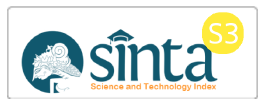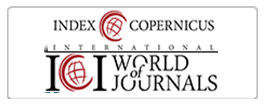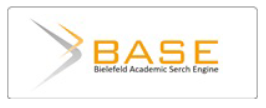Market Capitalization, Leverage, and the Pursuit of Sustainable Growth: Evidence from the Indonesian FinTech Industry
DOI:
https://doi.org/10.22219/jaa.v7i2.31212Keywords:
Banks, Financial Technology, Market Capitalization, Quantitative, Sustainable Growth RateAbstract
Purpose: This research aims to analyze the influence of three crucial financial factors in companies, namely Board Education Background Accounting, Market Capitalization, and Leverage on the Sustainable Growth Rate (SGR).
Methodology/approach: The type of research used in this study is quantitative research with an associative causal approach. The analyzed data consists of financial technology banks in Indonesia from 2017 to 2022, along with data from conventional companies to compare the performance of both types of banks. The number of companies used is six FinTech and four conventional banks that compare the performance of the two types of samples.
Findings: The research results provide valuable insights for FinTech stakeholders, assisting in making informed decisions regarding financial management and growth strategies.
Practical and Theoretical contribution / Originality: This research contributes to the academic literature in the field of corporate finance and sustainable growth, especially within the rapidly evolving FinTech context.
Research Limitation: Despite the fact that this study considers three main variables, there is still a possibility that other factors influencing the SGR are not taken into account.
Downloads
References
A. Rizki, & Serly, V. (2022). Pengaruh Karakteristik Dewan Direksi terhadap Kinerja Bank Syariah. Jurnal Eksplorasi Akuntansi, 4(1), 232–247. https://doi.org/10.24036/jea.v4i1.443
Agus Sartono. (2010). Manajemen Keuangan Teori dan Aplikasi. (4th Ed.). BPFE.
Akhtar, M., Yusheng, K., Haris, M., Ain, Q. U., & Javaid, H. M. (2022). Impact of financial leverage on sustainable growth, market performance, and profitability. Economic Change and Restructuring, 55(2), 737–774. https://doi.org/10.1007/s10644-021-09321-z
Almulla, D., & Aljughaiman, A. A. (2021). Does financial technology matter? Evidence from an alternative banking system. Cogent Economics and Finance, 9(1). https://doi.org/10.1080/23322039.2021.1934978
Arnoud Boot, by, Hoffmann, P., Laeven, L., Ratnovski, L., Soledad Martinez Peria, M., Beyer, A., Colliard, J.-E., Faltermeier, J., Heider, F., Hertig, G., Mancini-Griffoli, T., Manganelli, S., Martin, A., & Schepens, G. (2020). WP/20/161 Financial Intermediation and Technology: What’s Old, What’s New? Authorized for distribution by.
Arora, L., Kumar, S., & Verma, P. (2018). The Anatomy of Sustainable Growth Rate of Indian Manufacturing Firms. Global Business Review, 19(4), 1050–1071. https://doi.org/10.1177/0972150918773002
Aziz, A., & Pratama, P. (2018). Liquidity and Asset Quality on Sustainable Growth Rate of Banking Sector. International Journal of Science and Research. https://doi.org/10.21275/ART20201615
Azmi, S. H. (2023). Analisis Trend Market Capitalization dalam Memproyeksikan Return Saham pada PT Vale Indonesia Tbk Periode 2017-2022. 3, 7727–7735.
Barquin, S., Gantes, G. de, HV, V., & Shrikhande, D. (2019). Digital banking in Indonesia: Building loyalty and generating growth. McKinsey & Company. https://www.mckinsey.com/industries/financial-services/our-insights/digital-banking-in-indonesia-building-loyalty-and-generating-growth
Barroso, M., & Laborda, J. (2022). Digital transformation and the emergence of the Fintech sector: Systematic literature review. Digital Business, 2(2). https://doi.org/10.1016/j.digbus.2022.100028
Berg, T., Burg, V., Gombović, A., & Puri, M. (2020). On the Rise of FinTechs: Credit Scoring Using Digital Footprints. Review of Financial Studies, 33(7), 2845–2897. https://doi.org/10.1093/rfs/hhz099
Chen. (2018). Market Capitalization: How Is It Calculated and What Does It Tell Investors? Investopedia.
Claire Boyte White. (2023). Market Capitalization vs. Market Value: What’s the Difference? Investopedia.
Febriani, N., Hayat, A., Sadikin, A., Juwita, R., Bisnis, F., Darwan Ali, U., Ekonomi Dan Bisnis, F., Lambung Mangkurat, U., & Negeri Jakarta, P. (n.d.). Sustainable Growth Rate Dalam Mempengaruhi Return Saham Dengan Covid-19 Dan Sustainability Report Sebagai Variabel Moderasi. 6(3), 2022.
Freeman, R. E., & McVea, J. (2010). A Stakeholder Approach to Strategic Management. In Oxford: Blackwell Publishing. https://doi.org/10.1002/jctb.619
Georg Vonkrogh dan Sebastian Raisch. (2007). Navigating a Path to Smart Growth. MIT Sloan Management Review, 48(3), 65–72.
Higgins, R. C. (1977). How much growth can a firm afford?. Financial management, 7-16.
Huang, R., & Liu, G. (2009). Study on the Enterprise Sustainable Growth and the Leverage Mechanism. International Journal of Business and Management, 4(3), 200–205. https://doi.org/10.5539/ijbm.v4n3p200
Huo, W., Zaman, B. U., Zulfiqar, M., Kocak, E., & Shehzad, K. (2023). How do environmental technologies affect environmental degradation? Analyzing the direct and indirect impact of financial innovations and economic globalization. Environmental Technology and Innovation, 29. https://doi.org/10.1016/j.eti.2022.102973
Hwang, J., Kim, H., & Jung, D. (2021). The effect of esg activities on financial performance during the covid-19 pandemic—evidence from korea. Sustainability (Switzerland), 13(20). https://doi.org/10.3390/su132011362
J.B. Maverick. (2021). Market Capitalization vs. Equity: What’s the Difference? Investopedia.
Kartikaningdyah, E., Natalia Putri Jurusan Manajemen Bisnis, R., Negeri Batam, P., & Jurusan Manajemen Bisnis, I. (2017). Pengaruh Tax Avoidance dan Board Diversity terhadap Kinerja Perusahaan dalam Perspektif Corporate Governance. In Journal of Applied Accounting and Taxation Article History (Vol. 2, Issue 2).
Kharrat, H., Trichilli, Y., & Abbes, B. (2023). Relationship between FinTech index and bank’s performance: a comparative study between Islamic and conventional banks in the MENA region. Journal of Islamic Accounting and Business Research. https://doi.org/10.1108/JIABR-03-2022-0081
Legowo, M. B., Subanidja, S., & Sorongan, F. A. (2021). FinTech and Bank: Past, Present, and Future. Jurnal Teknik Komputer AMIK BSI, 7(1). https://doi.org/10.31294/jtk.v4i2
Lidya Eka Putri, & Darmayanti, Y. (2021). Pengaruh Usia, Pendidikan, Etnis, Tenure Dan Board Ownership Terhadap Manajemen Laba Pada Perusahaan Manufaktur Di Bursa Efek Indonesia 2014-2018. Jurnal Kajian Akuntansi Dan Auditing, 16(2), 107–121. https://doi.org/10.37301/jkaa.v16i2.47
Maria, A., Cahyana, K., & Suhendah, R. (n.d.). Pengaruh Leverage, Firm Size, Firm Age, dan Sales Growth In Jurnal Multiparadigma Akuntansi Tarumanagara (Vol. 2, Issue 2020). www.idx.co.id.
Maryunita, L., & Nugroho, I. T. (2022). Fintech Innovation and Bank Efficiency in Indonesia. Khazanah Sosial, 4(4), 626–635. https://doi.org/10.15575/ks.v4i4.20239
Mashamba, T., & Gani, S. (2023). Fintech, bank funding, and economic growth in Sub-Saharan Africa. Cogent Economics and Finance, 11(1). https://doi.org/10.1080/23322039.2023.2225916
Matei, F. B., Boboc, C., & Ghiță, S. (2021). The relationship between corporate social responsibility and financial performance in romanian companies. Economic Computation and Economic Cybernetics Studies and Research, 55(3), 297–314. https://doi.org/10.24818/18423264/55.3.21.19
Moro-Visconti, R., Rambaud, S. C., & Pascual, J. L. (2020a). Sustainability in FinTechs: An explanation through business model scalability and market valuation. Sustainability (Switzerland), 12(24), 1–24. https://doi.org/10.3390/su122410316
Moro-Visconti, R., Rambaud, S. C., & Pascual, J. L. (2020b). Sustainability in FinTechs: An explanation through business model scalability and market valuation. Sustainability (Switzerland), 12(24), 1–24. https://doi.org/10.3390/su122410316
Mukherjee, T. (2018). Sustainable Growth Rate And Its Determinants: A Study On Some Selected Companies In India. www.nseindia.com
Nalim. (2011). Good Corporate Governance Dalam Perspektif Islam Oleh: Nalim, S.Si., M.Si . Jurnal Hukum Islam, 1–14.
Nasim, A., & Irnama, F. R. (2015). Pengaruh Profit Margin, Assets Turnover Dan Leverage Terhadap Sustainable Growth Rate Pada Perusahaan Sektor Jasa Yang Terdaftar Di Bursa Efek Indonesia. Jurnal Riset Akuntansi Dan Keuangan, 3(1), 632–648.
Nugroho, V. C. (2020). Sustainable Growth Rate Model in Indonesia Manufacturing Firms. The Winners, 21(2). https://doi.org/10.21512/tw.v21i2.6614
Olson, G. T., & Pagano, M. S. (2005). A new application of sustainable growth: A multi-dimensional framework for evaluating the long run performance of bank mergers. Journal of Business Finance and Accounting, 32(9–10), 1995–2036. https://doi.org/10.1111/j.0306-686X.2005.00656.x
Park, K., & Jang, S. C. (Shawn). (2013). Capital structure, free cash flow, diversification and firm performance: A holistic analysis. International Journal of Hospitality Management, 33(1), 51–63. https://doi.org/10.1016/j.ijhm.2013.01.007
Patel, P. C., Guedes, M. J., Pagano, M. S., & Olson, G. T. O. (2020). Industry profitability matters: The value of sustainable growth rate and distance from bankruptcy as enablers of venture survival. Journal of Business Research, 114, 8092.
Pavone, P. (2019). Market Capitalization and Financial Variables: Evidence from Italian Listed Companies. International Journal of Academic Research in Business and Social Sciences, 9(3). https://doi.org/10.6007/ijarbss/v9-i3/5802
Pengaruh, A., Keberlanjutan, K., Keuangan, T. K., & Wijayana, S. (n.d.). Lembar Pengesahan Tim Pembimbing.
Penina, S., Sawiji, H., Samsudin, A., Pembangunan, U., Veteran, N. ", Timur, J., & Com, S. (2023). The Effect Of Income Smoothing, Firm Size, And Financial Leverage On Company Performance (Financial Study Of The Property And Real Estate Services Sub-Sector Listed On The Indonesian Stock Exchange Period 2017-2021) Pengaruh Income Smoothing, Firm Size, Dan Financial Leverage Terhadap Company Performance (Studi Keuangan Pada Sub Sektor Jasa Property Dan Real Estate Yang Terdaftar Di Bursa Efek Indonesia Periode 2017-2021). In Management Studies and Entrepreneurship Journal (Vol. 4, Issue 4). http://journal.yrpipku.com/index.php/msej
Phan, D. H. B., Narayan, P. K., Rahman, R. E., & Hutabarat, A. R. (2020). Do financial technology firms influence bank performance? Pacific Basin Finance Journal, 62. https://doi.org/10.1016/j.pacfin.2019.101210
Platt, H. D., Platt, M. B., Chen, G., Plait, H. D., & Ri~tant Portfolio, A. T. (n.d.). Sustainable Growth Rate of Firms in Financial Distress.
Prasetyo, A. A. (n.d.). Meminimalisir Asimetri Informasi Melalui Pelaporan (Disclosure) Laporan Keuangan. https://transpublika.co.id/ojs/index.php/Transekonomika
Purnomo, H., & Khalda, S. (2019). Influence of Financial Technology on National Financial Institutions. IOP Conference Series: Materials Science and Engineering, 662(2). https://doi.org/10.1088/1757-899X/662/2/022037
Sharif Abu Karsh, Y. A. (2020). The new era of financial technology in banking industry. Journal of Southwest Jiaotong University, 55(4)
Shatnawi, A., Al-Gasawneh, J. A., Mansur, H., & Alresheedi, A. (2022). The effect of board nationality and educational diversity on CSR performance: Empirical evidence from Australian companies. Uncertain Supply Chain Management, 10(4), 1467–1478. https://doi.org/10.5267/j.uscm.2022.6.009
Shelawangi, D. P., Aisyah, M. N., Farori, F. R., Vira, & Kurniawati, Y. (2023). Nusantara Hasana Journal. Nusantara Hasana Journal, 2(9), 185–190.
Subanidja, S., Legowo, M., & Sorongan, F. (2021, April 26). The Impact of FinTech on The Financial and Banking Sustainable Performance: Disruption or Collaboration. https://doi.org/10.4108/eai.1-10-2020.2304698
Sugiyono. (2017). Metode penelitian bisnis: pendekatan kuantitatif, kualitatif, kombinasi, dan R&D (3rd ed., Vol. 1). Alfabeta.
Sugiyono. (2018). Metode Penelitian Kualitatif. Alfabeta.
Sumartini, E. (2020). Pengaruh Struktur Modal, Ukuran Perusahaan, Dan Pendidikan Dewan Komisaris Terhadap Kinerja Perusahaan Manufaktur Di Bursa Efek Indonesia. Jurnal Dinamika Ekonomi & Bisnis, 17(2). https://doi.org/10.34001/jdeb.v17i2.1093
Suwardika, I. N. A., & Mustanda, I. K. (2017). Pengaruh Leverage, Ukuran Perusahaan, Pertumbuhan Perusahaan, Dan Profitabilitas Terhadap Nilai Perusahaan Pada Perusahaan Properti. E-Jurnal Manajemen Unud, 6(3), 1248–1277.
Thalib, D., & Makassar, S.-Y. (2016). Intermediasi, Struktur Modal, Efisiensi, Permodalan Dan Risiko Terhadap Profitabilitas Bank (Vol. 20, Issue 1). http://jurkubank.wordpress.com
Toumi, A., Najaf, K., Dhiaf, M. M., Li, N. S., & Kanagasabapathy, S. (2023). The role of Fintech firms’ sustainability during the COVID-19 period. In Environmental Science and Pollution Research (Vol. 30, Issue 20, pp. 58855–58865). https://doi.org/10.1007/s11356-023-26530-3
Utami, N. (2020). Analysis Of The Influences Of Dividend Payout Ratio, Return On Equity, Growth And Firm Size On Stock Value With Leverage As Mediating Variable. Jurnal Akademi Akuntansi, 3(1), 44. https://doi.org/10.22219/jaa.v3i1.11501
Vuković, B., Tica, T., & Jakšić, D. (2022). Sustainable Growth Rate Analysis in Eastern European Companies. Sustainability (Switzerland), 14(17). https://doi.org/10.3390/su141710731
Wahyuni, E. D. (2022). Adakah Korelasi Enterprise Risk Management (ERM), Profitabilitas Dan Leverage Keuangan Terhadap Return Saham? Jurnal Akademi Akuntansi, 5(2), 166–175. https://doi.org/10.22219/jaa.v5i2.18885
Wang, J. H., Wu, Y. H., Yang, P. Y., & Hsu, H. Y. (2023). Sustainable Innovation and Firm Performance Driven by FinTech Policies: Moderating Effect of Capital Adequacy Ratio. Sustainability (Switzerland), 15(11). https://doi.org/10.3390/su15118572
Widyati, & Maria, F. (2023). Pengaruh Dewan Direksi, Komisaris Independen, Komite Audit, Kepemilikan Manajerial, dan Kepemilikan Institusional Terhadap Kinerja Keuangan. Jurnal Ilmu Manajemen (JIM), 1(265–98), 15–19.
Downloads
Published
Issue
Section
License
Copyright (c) 2024 Iwan Suhardjo, Meiliana Suparman, Yulias Hidayah, Misnawati Misnawati, Adinda Nurul Rahmadyan, Rendy Diaz Hirlian

This work is licensed under a Creative Commons Attribution-NonCommercial-ShareAlike 4.0 International License.
Jurnal Akademi Akuntansi is licensed under a Creative Commons Attribution-NonCommercial-ShareAlike 4.0 International License.
Authors who publish with this journal agree to the following terms:
- Authors retain copyright and grant the journal right of first publication with the work simultaneously licensed under a Creative Commons Attribution-NonCommercial-ShareAlike 4.0 International License that allows others to share the work with an acknowledgment of the work's authorship and initial publication in this journal.
- Authors are able to enter into separate, additional contractual arrangements for the non-exclusive distribution of the journal's published version of the work (e.g., post it to an institutional repository or publish it in a book), with an acknowledgment of its initial publication in this journal.
- Authors are permitted and encouraged to post their work online (e.g., in institutional repositories or on their website) prior to and during the submission process, as it can lead to productive exchanges, as well as earlier and greater citation of published work (See The Effect of Open Access).
Jurnal Akademi Akuntansi dilisensikan di bawah lisensi Creative Commons Attribution-NonCommercial-ShareAlike 4.0 International.
Penulis yang menerbitkan artikel di jurnal ini menyetujui ketentuan berikut:
- Penulis mempertahankan hak cipta dan memberikan hak jurnal atas publikasi pertama dengan karya yang secara serentak dilisensikan di bawah Lisensi Pengaitan Creative Commons yang memungkinkan orang lain untuk berbagi karya dengan pengakuan atas karya penulis dan publikasi awal dalam jurnal ini.
- Penulis dapat masuk ke dalam pengaturan kontrak tambahan yang terpisah untuk distribusi non-eksklusif versi karya jurnal yang diterbitkan (misalnya, mempostingnya ke repositori institusional atau mempublikasikannya dalam sebuah buku), dengan pengakuan publikasi awalnya di jurnal ini.
- Penulis diizinkan dan didorong untuk memposting pekerjaan mereka secara online (misalnya, di repositori institusional atau di situs web mereka) sebelum dan selama proses pengajuan, karena dapat mengarah pada pertukaran produktif, serta kutipan pekerjaan sebelumnya dan yang lebih besar (Lihat Pengaruh Akses Terbuka).























